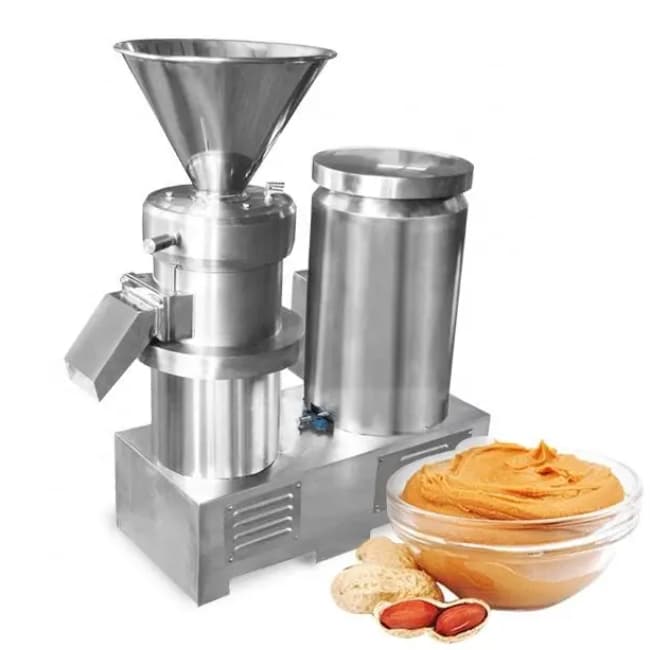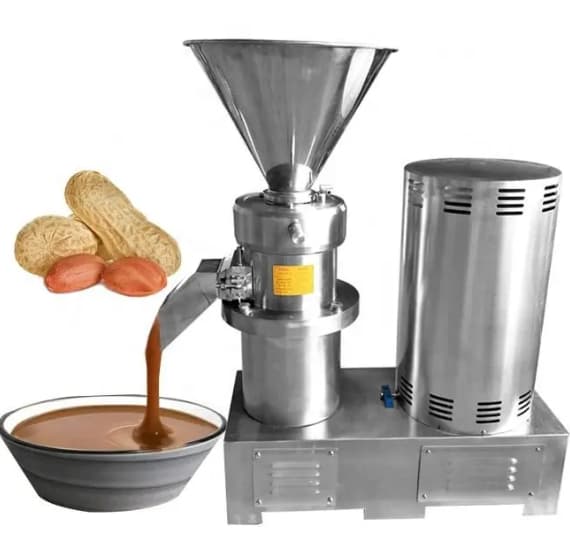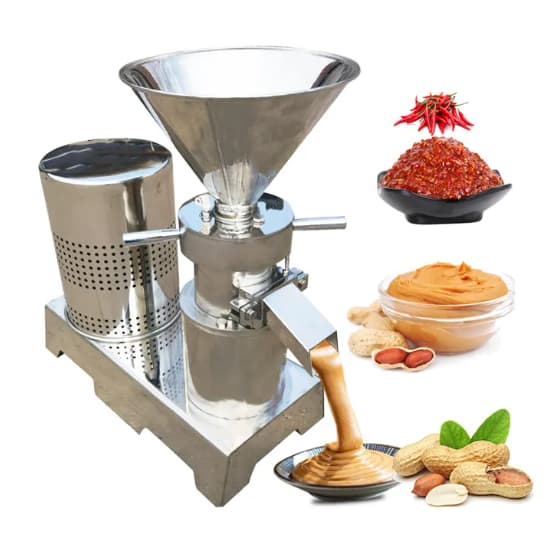The colloid mill is a powerful tool widely used in industries such as pharmaceuticals, food, cosmetics, and chemicals. Designed to reduce particle size and achieve high-shear mixing, the colloid mill delivers uniform and stable emulsions, suspensions, and dispersions. In this comprehensive guide, we’ll dive deep into what a colloid mill is, how it works, its advantages, common types, and tips for choosing the right model for your application.

What is a Colloid Mill Machine?
A colloid mill is a mechanical device used to reduce the particle size of solids suspended in a liquid or to reduce the droplet size of a liquid suspended in another liquid. It operates on the principle of rotor-stator shear, meaning it uses high-speed rotation between a rotor and a stator to create mechanical shear forces. These forces break down particles and ensure a fine, uniform dispersion or emulsion.
How Does a High Shear Colloid Mill Work?
The high shear colloid mill relies on a combination of mechanical forces, such as shear, friction, turbulence, and cavitation. Here’s how the process works:
- The material is fed into the inlet.
- A rotating rotor spins at very high speeds (often between 2,000 to 18,000 RPM).
- The material is forced through a narrow gap between the rotor and the stationary stator.
- The intense mechanical forces create a homogenous mixture with finely dispersed particles.
The resulting product from a high shear colloid mill often has excellent stability, extended shelf life, and improved texture.
Advantages of Using a Colloid Milling Machine
Implementing a colloid milling machine into your production line brings numerous advantages:
1. Fine Particle Reduction
Colloid mills can reduce particle sizes to the sub-micron level, ensuring extremely fine emulsions and suspensions.
2. High Efficiency
The process is continuous and highly efficient, capable of processing large volumes with minimal downtime.
3. Uniform Product Quality
Because of the consistent shear forces applied, the final product is remarkably uniform in texture and composition.
4. Versatile Applications
Colloid mills can handle a wide variety of materials—whether viscous, fibrous, or abrasive.
5. Easy Maintenance
Modern designs emphasize tool-free maintenance and easy cleaning, crucial for industries like food and pharmaceuticals where hygiene is critical.

Key Applications of an Industrial Colloid Mill
The industrial colloid mill is incredibly versatile. Here are some of the main industries that benefit from it:
– Food Industry
Used for making mayonnaise, peanut butter, ketchup, dairy products, and salad dressings.
– Pharmaceutical Industry
Essential for producing ointments, creams, vaccines, and gels.
– Cosmetics Industry
Employed in the creation of lotions, creams, and emulsified serums.
– Chemical Industry
Perfect for producing paints, lubricants, polymers, and coatings.
– Biotechnology
Used for breaking down cell walls and preparing cell suspensions.
Colloid Grinder vs. Other Grinding Equipment
When comparing a colloid grinder to other size-reduction equipment such as homogenizers or ball mills, the colloid mill stands out for its:
- Superior shear force generation
- Continuous processing ability
- Capability to handle highly viscous materials
- Compact design for easy integration into existing systems
Homogenizers are excellent for extremely high-pressure applications, but colloid grinders are better suited for mid-to-high viscosity materials and slightly larger particle reduction requirements.

Different Types of Colloid Mills
Several variations of colloid mills are available depending on the material and industry needs. Common types include:
– Horizontal Colloid Mill
The most traditional form where the rotor-stator is aligned horizontally.
– Vertical Colloid Mill
Space-saving and easier to integrate into existing processing lines.
– Laboratory Colloid Mill
Compact models designed for R&D and small-batch production.
– Inline Colloid Mill
Allows for continuous production without recirculation, increasing efficiency in large-scale operations.
Each type offers specific advantages, and the choice largely depends on the application’s scale and material characteristics.
Important Features of a Colloid Milling Machine
When selecting a colloid milling machine, keep an eye out for these important features:
1. Adjustable Gap
The distance between the rotor and stator can be adjusted, allowing control over the particle size distribution.
2. Speed Control
Variable speed drives offer flexibility in handling different materials and desired end products.
3. Material of Construction
Stainless steel construction is critical for food-grade and pharmaceutical applications to ensure corrosion resistance and cleanliness.
4. Cooling System
Since high shear can generate heat, many colloid mills come equipped with cooling jackets to maintain temperature-sensitive products.
5. Easy Disassembly
Quick disassembly without tools allows faster cleaning and maintenance, minimizing downtime.


Factors to Consider When Choosing a Colloid Mill
Selecting the right colloid mill requires careful consideration of the following factors:
– Viscosity of the Product
Higher viscosity materials need mills with more powerful motors and robust designs.
– Throughput Requirements
Small-batch production may only require a laboratory model, while full-scale manufacturing will need an industrial unit.
– Particle Size Target
Knowing your final desired particle size helps you pick a machine with suitable speed and gap adjustability.
– Cleanability
Industries like food and pharma demand machines that are easy to clean and sanitize.
– Budget Constraints
Higher-end models come with more features but also a higher price tag. Balance features with your operational needs.
Maintenance Tips for Extending the Life of Your Colloid Mill
Proper maintenance is crucial for ensuring your colloid mill runs efficiently for years. Some key tips include:
- Regularly inspect and replace worn-out rotor and stator parts.
- Use appropriate lubricants as specified by the manufacturer.
- Clean the machine thoroughly after each batch.
- Monitor motor bearings for signs of overheating or unusual noise.
- Always check for leakages or unusual vibrations during operation.


Future Trends in Colloid Milling Technology
As industries push for higher productivity, lower energy consumption, and better quality, the future of colloid milling technology looks promising:
- Automation and Smart Control Systems: Integration with IoT and AI will allow predictive maintenance and real-time performance monitoring.
- Eco-Friendly Designs: New models are being engineered to reduce energy consumption and emissions.
- Material Innovations: Advanced wear-resistant materials for rotors and stators are being developed to enhance durability.
- Compact Modular Designs: Future colloid mills are likely to be more compact and modular, offering easy scalability.
Conclusion
A colloid mill is more than just a grinding machine—it’s a critical asset in ensuring product quality and process efficiency across numerous industries. Understanding its working principle, benefits, and how to select the right model can significantly impact your operational success. As technology advances, colloid mills continue to evolve, offering better performance, lower costs, and easier maintenance.
Whether you’re in food production, pharmaceuticals, cosmetics, or chemicals, investing in the right colloid mill can lead to better products, higher throughput, and greater customer satisfaction.
